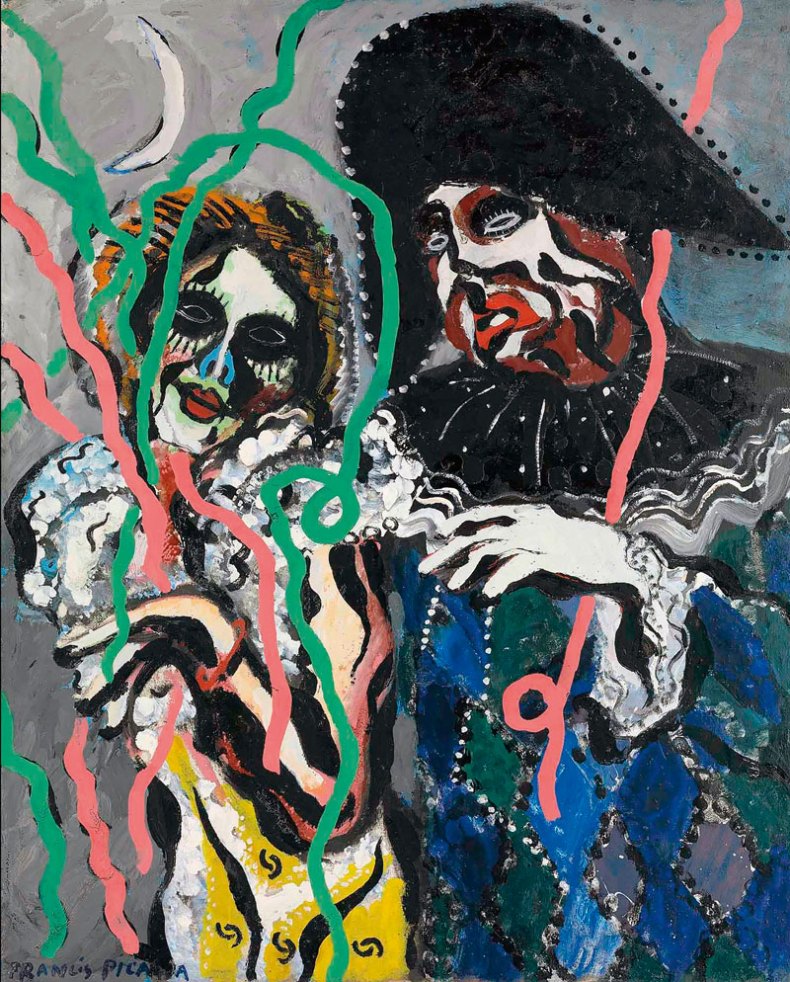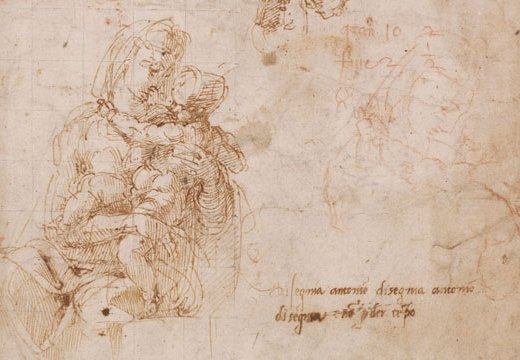‘Each artist is a mould. I aspire to be many. One day I’d like to write on the wall of my house: “Artist in all genres”.’ So wrote the artist and cultural provocateur par excellence Francis Picabia (1879–1953) in 1923, a year after he staged an extraordinary exhibition at the Galeries Dalmau in Barcelona. Here he had hung 47 works of vividly contrasting styles – from his abstract ‘mecanomorphic’ pictures to his traditional-style figurative ‘Espagnoles’ portraits of sultry Mediterranean women. Critics and public alike were baffled by this strange combination of subjects (as well as its installation, which included carefully placed rugs and vases of flowers), which of course delighted Picabia. The artist added to the provocation by declaring in the exhibition catalogue: ‘The man who provides the greatest change from Picabia is Picabia.’
Change and reinvention were the essential ingredients of Picabia’s art, and created with an array of different media. He was a painter, poet, novelist, publisher, editor, script writer, set designer, and composed musical scores. Picabia’s lifelong friend and sometime collaborator Marcel Duchamp described his career as a ‘kaleidoscopic series of art experiences […] marked by a strong personality’. He would also enjoy playing with many alter egos and variously wrote and drew under at least three different identities, including ‘Saint Augustine’, ‘Napoleon’, and ‘Funny Guy’.

Guillaume Apollinaire (1918), Francis Picabia. Courtesy Kunsthaus Zürich; © ProLitteris 2016
To some observers this multifaceted activity was a sign of an unfocused mind. They preferred it when he was the darling of the avant-garde, notably with Marcel Duchamp (whom he met in 1911), and when he was fêted in Europe and across the oceans for his cool, witty and daring abstractions, and then for the work he made after meeting Tristan Tzara and his fellow Dadaists in Zurich in 1918 and associating with figures such as Apollinaire in Paris.
However by 1925 Picabia had tired of avant-garde antics and decamped to the French Riviera, a move prompted by ‘a great need for sun’. Apart from Duchamp and a few other friends who were less uptight about the importance of their art, there were those who saw this move as a kind of giving up. For here Picabia would enjoy the life of a compulsive pleasure seeker for the next two decades. ‘I play baccarat and I lose,’ he wrote at one point, ‘but more and more I love this empty and sick atmosphere of the casinos.’ And he channelled a great deal of energy into a sun-drenched lifestyle filled with women, fast cars, yachts, and fancy-dress galas (many of which he organised). It was deemed to be a life too frivolous, and Gertrude Stein would write disparagingly of the ‘delayed adolescence’ that clung to the artist.
As a result, some future organisers of Picabia exhibitions would view the work he produced during this time with a degree of scepticism. But, arguably, it is just these works that are now among the most interesting, as this fabulous exhibition reveals. It is invigorating to see how continuously inventive Picabia was but, more importantly, how cunningly he reflected the society in which he lived, as seen most stridently in the series of so-called ‘Monster’ paintings. He started these soon after arriving in the south of France, depicting amorous couples frenetically embracing, and partly inspired by the gaudy annual carnivals that he saw in Nice and elsewhere, and which encapsulated the desiccated decadence of the idle rich. As Aurélie Verdier writes in the excellent catalogue, Picabia had taken on a style of ‘overfiguration’, using a melange of motifs of gaudy patterns filled with a heady mix of dots, zigzags, and stripes. The works were, in fact, a visualisation of Picabia’s novel Caravansérail, written in 1924 (but not published until 1974): a story about the vile exploits of a hypocritical society.

Mid-Lent (1925–26), Francis Picabia. Courtesy Kunsthaus Zürich; © ProLitteris 2016
The irony of this acerbic social critique was that this was the life Picabia both enjoyed, and hated, so much. By 1932 he wrote of the ‘nauseating types who populate this region’, but he continued to live there until 1945. However, it was this tension that stoked the raging fire of his strange and intoxicated imagination. He just couldn’t help himself.
During the Second World War, living under the pressures of Vichy France, this self-mockery took a further turn with his series of ‘pin-up’ paintings – erotically charged, kitschy, proto-Pop realist works whose unsettlingly cheery imagery was drawn from popular culture. Picabia was the master of creating artworks that worked as masks, both suggesting and concealing the emptiness of the Western culture around him.
Part of this outlook was no doubt tempered by his health – Picabia had repeated bouts of illness and depression. Yet at the heart of his work there is a vibrant, neurotic sense of humour that fizzes and burns throughout his career, one which is still apparent in his late, seemingly melancholic dot-filled abstract paintings, which are as much self-portraits as they are a perfect exercise in slow self-erasure.
Despite this, Picabia remained an artist who seemed to sense the edginess of every decade in which he lived, and his art never sunk into apathy or repetition. His persistent need to continually transform, experiment, and reinvent are among the qualities that make him one of the 20th-century greats. In later years Gertrude Stein would grow to understand and appreciate this methodology in Picabia. She recognised his irrepressible talent as something original and important. As she would write: ‘he understands and invents everything’. No wonder generations of artists since the 1960s have been such fans of the funny guy.
‘Francis Picabia: A Retrospective’ is at the Kunsthaus Zürich until 25 September.
From the September issue of Apollo: preview and subscribe here.














![Masterpiece [Re]discovery 2022. Photo: Ben Fisher Photography, courtesy of Masterpiece London](http://zephr.apollo-magazine.com/wp-content/uploads/2022/07/MPL2022_4263.jpg)
‘Like landscape, his objects seem to breathe’: Gordon Baldwin (1932–2025)